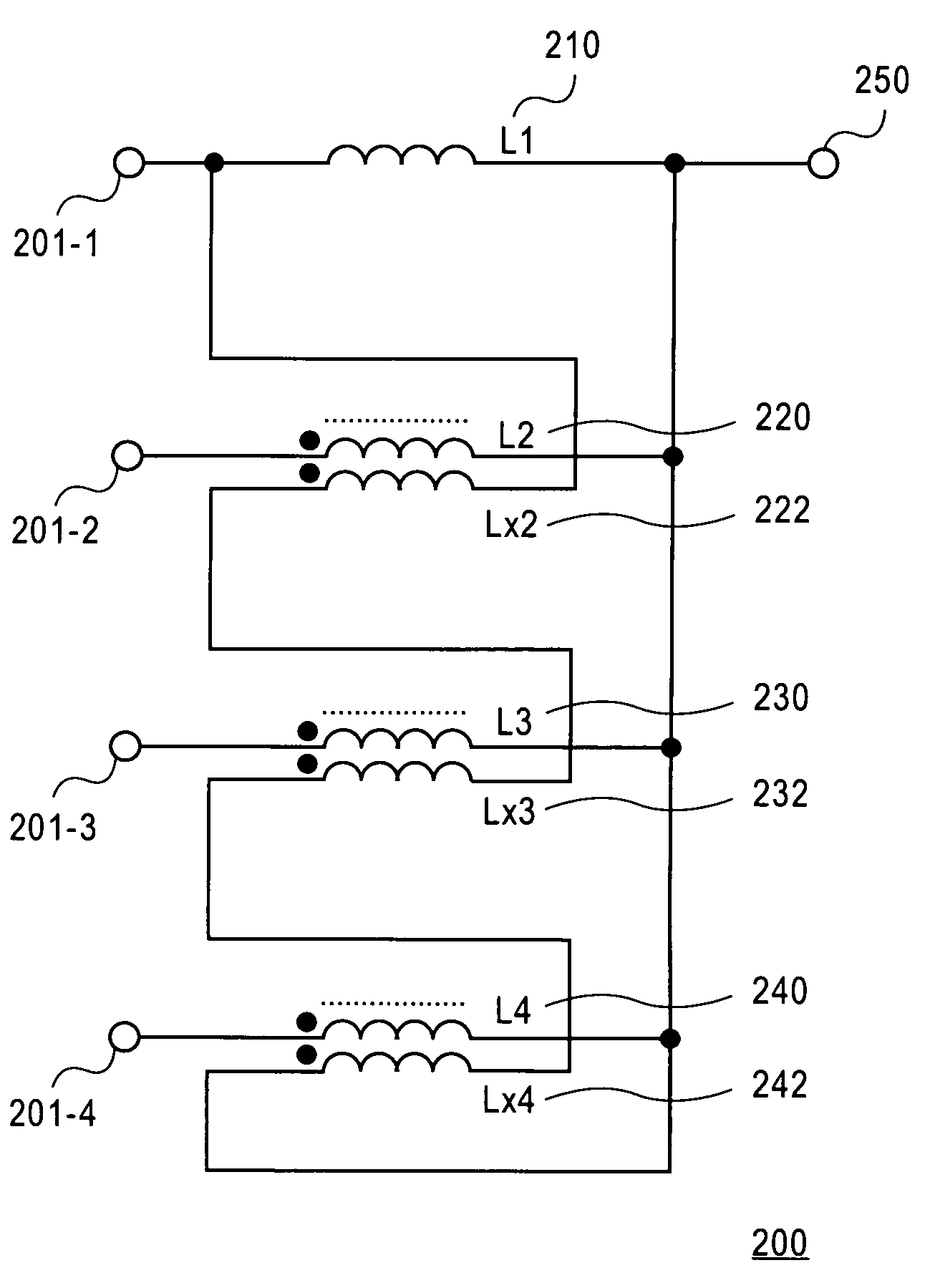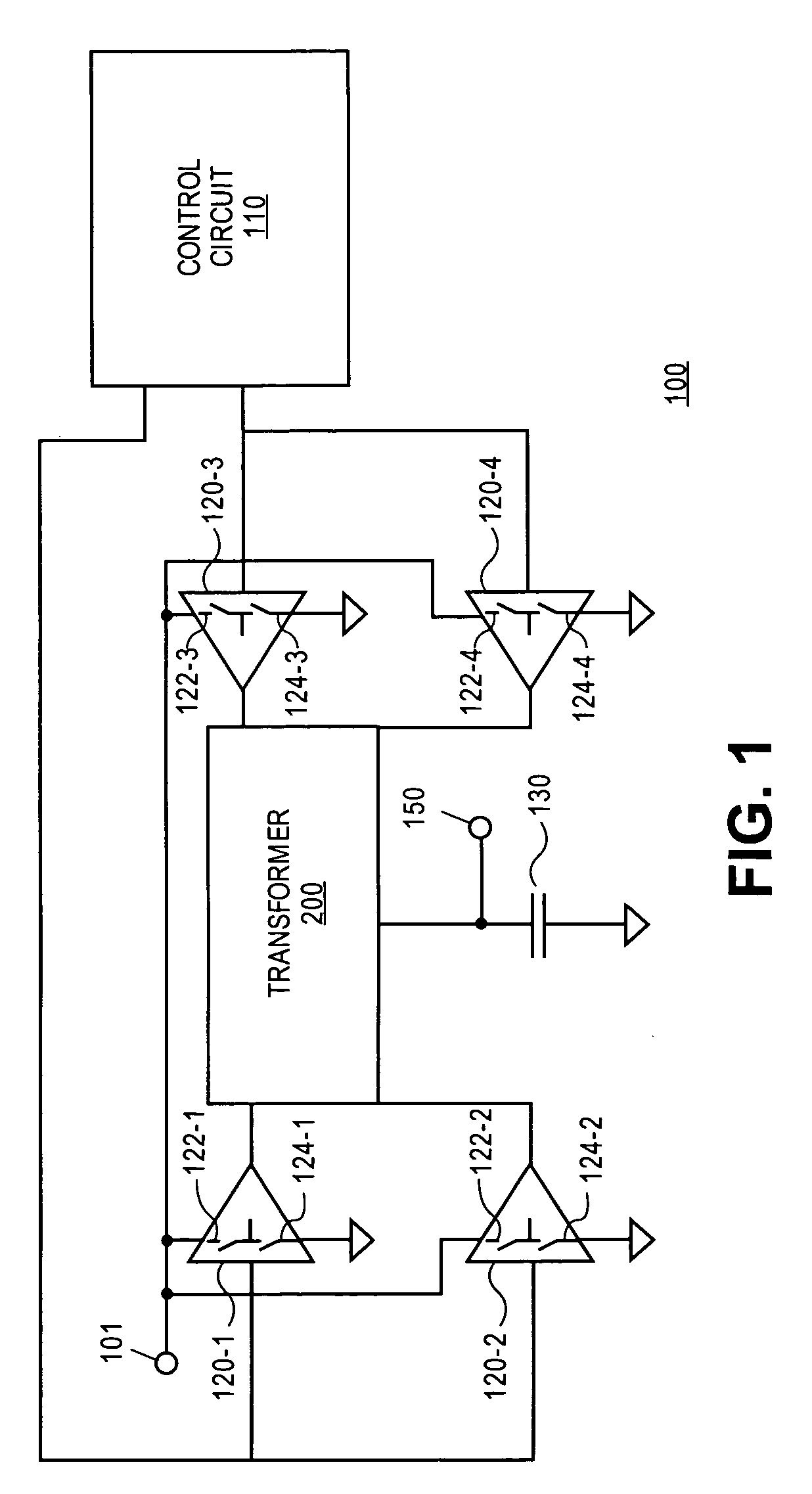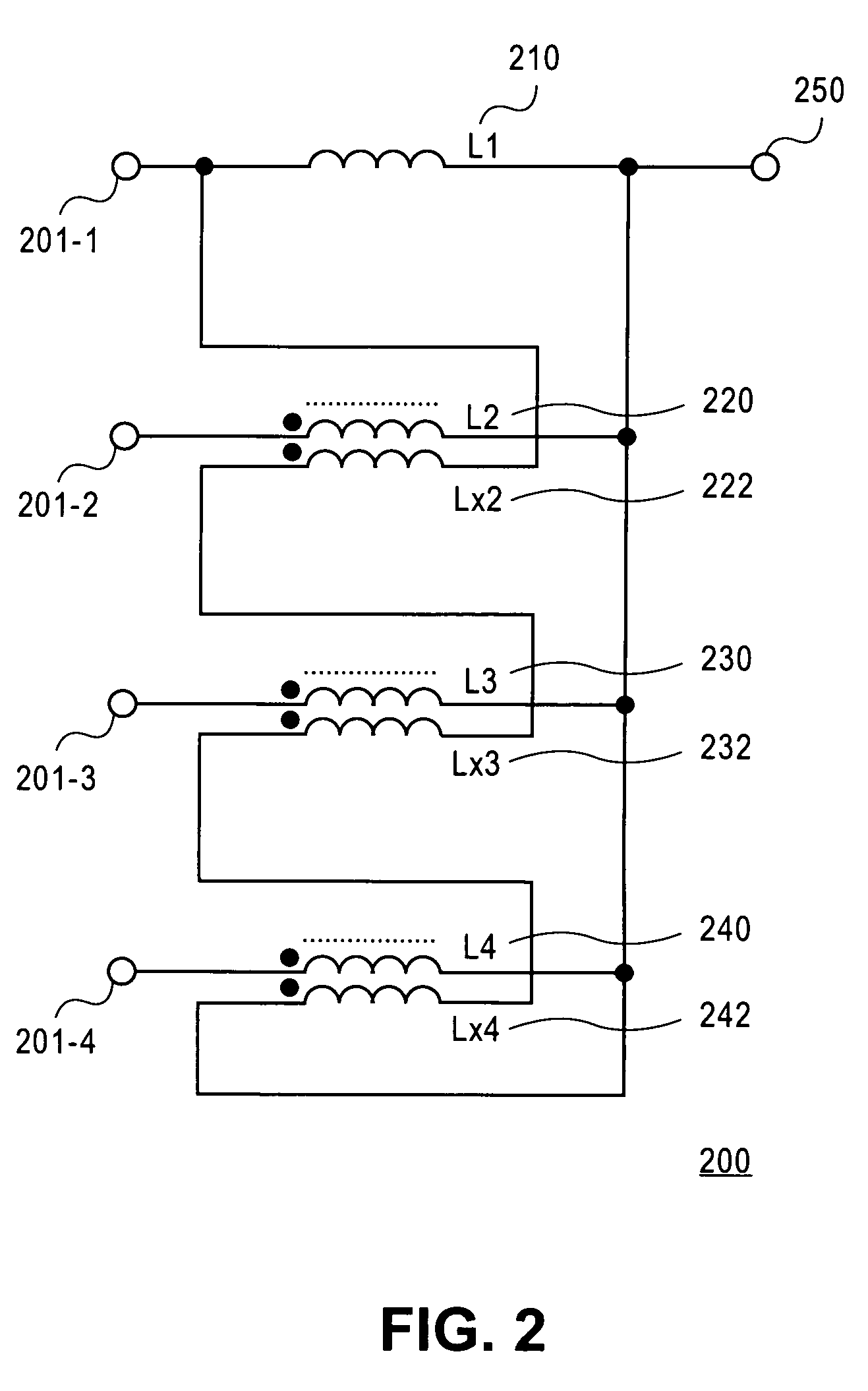Apparatus and method for multi-phase transformers
a multi-phase transformer and apparatus technology, applied in the direction of circuit-breaking switches, process and machine control, instruments, etc., can solve the problems of increasing the footprint of dc-dc converters, ics are less tolerant of power supply inaccuracy, and inaccurate power supplies
- Summary
- Abstract
- Description
- Claims
- Application Information
AI Technical Summary
Benefits of technology
Problems solved by technology
Method used
Image
Examples
Embodiment Construction
[0016]Reduction of supply voltage (VCC) for low voltage applications (e.g., mobile / handheld devices) makes the problem of delivering larger currents with high conversion efficiency quite challenging. Employing traditional methods to meet VCC variation targets on the micro-processor die in the presence of large current transients requires a prohibitively large amount of on die decoupling capacitance especially for low voltage platforms. An alternative technique for meeting VCC variation is the use of a motherboard voltage regulator and converter module (VRM) that operates at a high frequency. Furthermore, expensive solutions are required to minimize impedance (Zext) of the off chip supply network carrying high current from the VRM to the die across the board, sockets and package traces.
[0017]Accordingly, FIG. 1 illustrates a direct current (DC) to DC (DC-DC) converter 100, which my be either packaged or integrated on a die of a processor in accordance with one embodiment. A DC-DC con...
PUM
 Login to View More
Login to View More Abstract
Description
Claims
Application Information
 Login to View More
Login to View More - R&D
- Intellectual Property
- Life Sciences
- Materials
- Tech Scout
- Unparalleled Data Quality
- Higher Quality Content
- 60% Fewer Hallucinations
Browse by: Latest US Patents, China's latest patents, Technical Efficacy Thesaurus, Application Domain, Technology Topic, Popular Technical Reports.
© 2025 PatSnap. All rights reserved.Legal|Privacy policy|Modern Slavery Act Transparency Statement|Sitemap|About US| Contact US: help@patsnap.com



